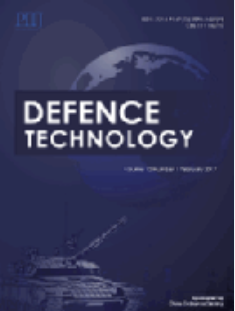Dynamic response of blast doors enhanced by enclosed-space TNT explosions: Experimental and numerical study
IF 5
Q1 ENGINEERING, MULTIDISCIPLINARY
引用次数: 0
Abstract
The afterburning of TNT and structural constraints in confined spaces significantly amplify the blast load, leading to severe structural damage. This study investigates the mechanisms underlying the enhanced dynamic response of reinforced concrete blast doors with four-sided restraints in confined space. Explosion tests with TNT charges ranging from 0.15 kg to 0.4 kg were conducted in a confined space, capturing overpressure loads and the dynamic response of the blast door. An internal explosion model incorporating the afterburning effect was developed using LS-DYNA software and validated against experimental data. The results reveal that the TNT afterburning effect amplifies both the initial peak overpressure and the quasi-static overpressure, resulting in increased deformation of the blast door. Within the 0.15–0.4 kg charge range, the initial overpressure peak and quasi-static overpressure increased by an average of 1.79 times and 2.21 times, respectively. Additionally, the afterburning effect enhanced the blast door's deflection by 177%. Compared to open-space scenarios, the cumulative deflection of the blast door due to repeated shock wave impacts is significantly greater in confined spaces. Furthermore, the quasi-static pressure arising from the structural constraints sustains the blast door's deflection at a high level.
封闭空间TNT爆炸增强防爆门的动力响应:实验与数值研究
TNT的加力燃烧和密闭空间的结构约束极大地放大了爆炸载荷,导致了严重的结构破坏。本研究探讨了在密闭空间中具有四面约束的钢筋混凝土防爆门增强动力响应的机制。在密闭空间内进行了0.15 kg至0.4 kg TNT装药的爆炸试验,捕捉了超压载荷和防爆门的动态响应。利用LS-DYNA软件建立了考虑加力效应的内爆模型,并与实验数据进行了对比验证。结果表明:TNT加力效应放大了初始峰值超压和准静态超压,增大了爆破门的变形;在0.15 ~ 0.4 kg装药范围内,初始超压峰值和准静态超压分别平均增长1.79倍和2.21倍。此外,加力效应使防爆门的偏转度提高了177%。与开放空间相比,在密闭空间中,由于冲击波的反复冲击,防爆门的累积挠度要大得多。此外,由结构约束产生的准静压使防爆门的挠度保持在较高水平。
本文章由计算机程序翻译,如有差异,请以英文原文为准。
求助全文
约1分钟内获得全文
求助全文
来源期刊

Defence Technology(防务技术)
Mechanical Engineering, Control and Systems Engineering, Industrial and Manufacturing Engineering
CiteScore
8.70
自引率
0.00%
发文量
728
审稿时长
25 days
期刊介绍:
Defence Technology, a peer reviewed journal, is published monthly and aims to become the best international academic exchange platform for the research related to defence technology. It publishes original research papers having direct bearing on defence, with a balanced coverage on analytical, experimental, numerical simulation and applied investigations. It covers various disciplines of science, technology and engineering.
 求助内容:
求助内容: 应助结果提醒方式:
应助结果提醒方式:


